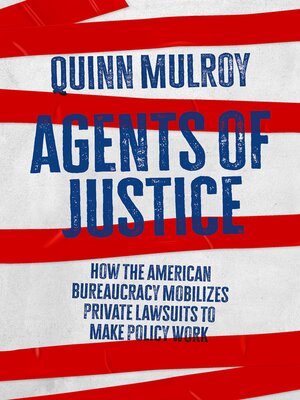Agents of Justice
ebook ∣ How the American Bureaucracy Mobilizes Private Lawsuits to Make Policy Work · Studies in Postwar American Political Development
By Quinn Mulroy

Sign up to save your library
With an OverDrive account, you can save your favorite libraries for at-a-glance information about availability. Find out more about OverDrive accounts.
Find this title in Libby, the library reading app by OverDrive.



Search for a digital library with this title
Title found at these libraries:
| Library Name | Distance |
|---|---|
| Loading... |
In the last half century since the height of the rights revolution - a period marked by significant rights expansions but limited government capacity to enforce them - efforts to defend individuals' and communities' rights have hinged on the effectiveness of the "litigation state:" a fragile but sometimes powerful mode of governance that relies on private litigants and their attorneys, rather than agencies, to enforce the laws of the land. In Agents of Justice, Quinn Mulroy argues that this system of governance was built and shaped by the concerted, mission-driven efforts of the agency officials who have largely been written out of the story of the litigation state. She traces how constrained civil rights and environmental agencies established during the rights revolution developed creative strategies for mobilizing mass private legal activity on the statutes they enforce, generating significant, societal-level regulatory effects. In doing so, they acted as agents of justice. Mulroy builds a new theory of the origins and development of the litigation state, challenging the conventional view that it was created to circumvent the bureaucracy and durably insulate private regulatory action in the courts. Through comparative case studies of the agencies charged with combatting employment discrimination, environmental degradation, and housing discrimination, she uncovers the pivotal, but quite hidden, role of agency officials in building, sustaining and, at times, even weakening private legal activity over time. By centering the efforts of agents of justice in our conception of the litigation state, this book offers major lessons for our understanding of American politics, regulation, and state building from the mid-20th century to the present.







